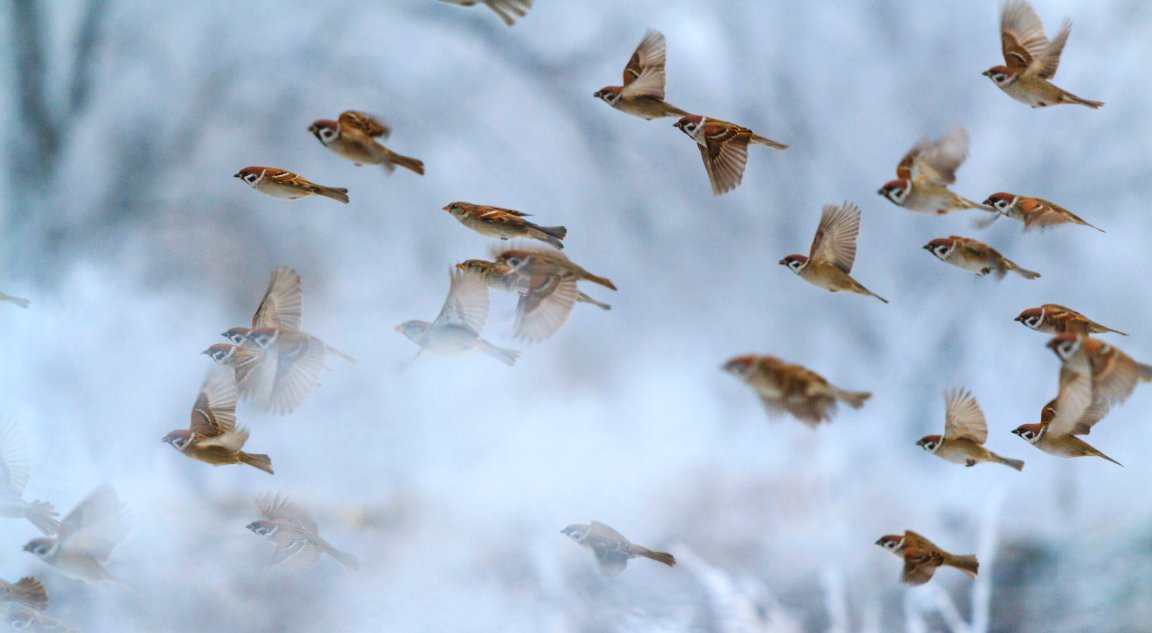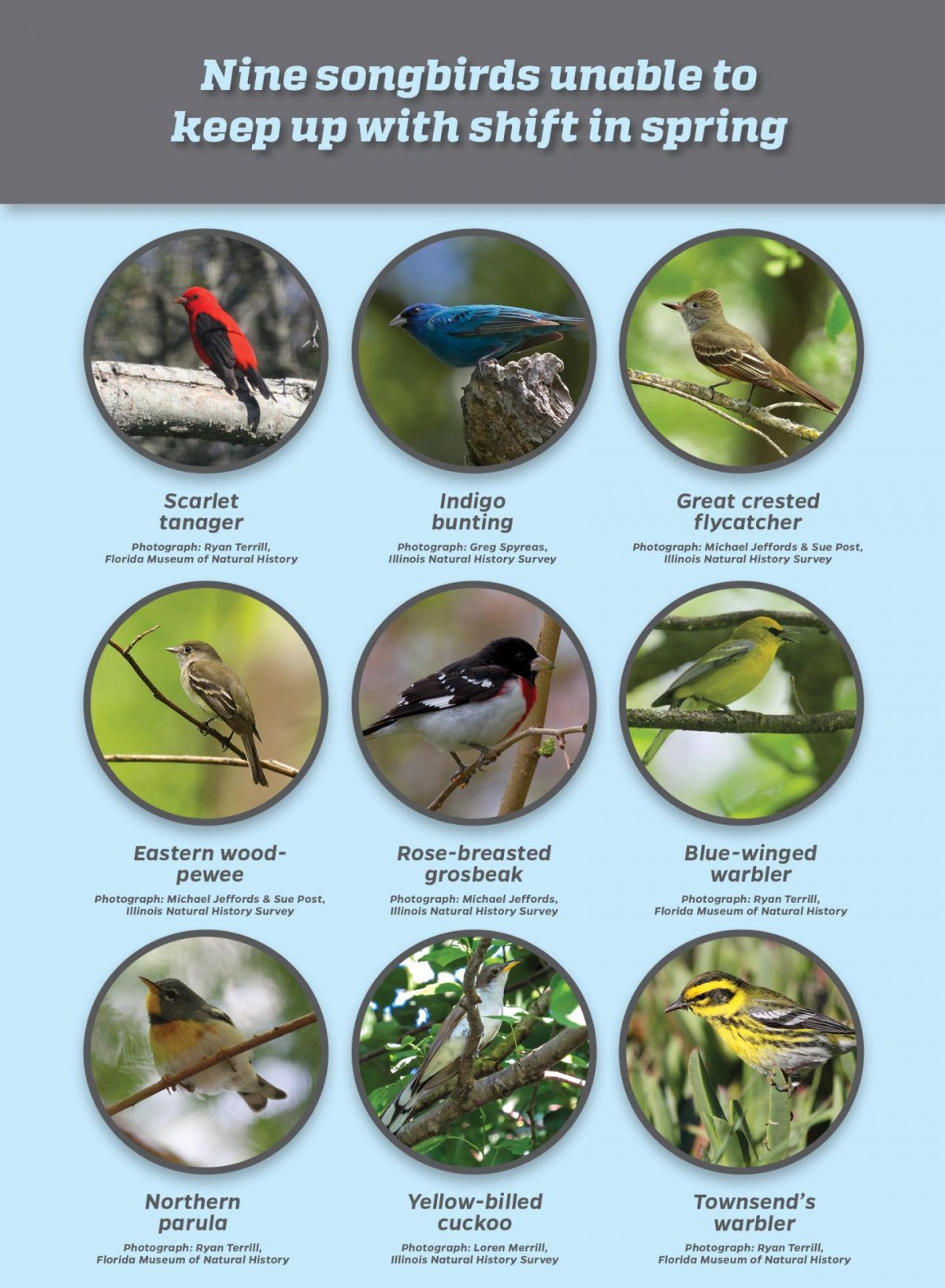
Bad Timing
The impact of climate change has reached a new location: American backyards.
The arrival of migratory birds at northern breeding grounds typically coincides with the growth of spring plants. A team of researchers from several universities studied data collected by citizen scientists and satellites between 2001 to 2012 in an attempt to see how climate change is affecting the birds’ ability to accurately time their arrival at these breeding grounds. Their research has been published in Scientific Reports.
Of the 48 North American songbird species that migrate north, the researchers found that nine — almost 20 percent — didn’t reach the grounds by the deadline critical for mating and breeding the next generation of birds. On average, the gap stretched by more than half a day each year across all species, for a total of five days per decade. However, the change for some species was far more drastic — double or triple that pace.

This delay was due to the effect of warmer temperatures on the growth cycles of plants. The birds leave their southern homes at the same time every year, basing their departure on the amount of daylight, which remains unaffected by climate change. However, climate change is altering when plants put out new leaves, with plants in eastern North America “greening up” sooner than normal, while plants in the western part of the continent are undergoing the process later.
This means birds are arriving either too soon and being met with frigid temperatures or too late and missing out on the insect boom that coincides with the new plant growth. Either condition means the birds have a much lower chance of surviving and reproducing, so the nine species identified in the study are therefore in danger of dwindling numbers.
Wreaking Worldwide Havoc
It’s easy to think that migratory birds would be immune to climate change since they can “get away” from a particular location at will, but that isn’t the case.
“If anything could adapt to climate change, you’d think that birds that migrate thousands of miles could,” University of Florida postdoctoral researcher Stephen Mayor, the study’s first author, said in a press release. “It’s much easier for them to move in response to climate conditions than salamanders, for example, or trees.”
[infographic postid=”45042″][/infographic]
“But because every species relates to another, one of our fears is that climate change can disrupt these relationships between organisms such that their critical life events are not timed optimally, putting them at risk,” he continued.
Meanwhile, evidence of climate change endangering and even wiping out entire species is apparent all over the world. A 2016 international study of plants found that at least 20 percent of all species are now threatened with extinction, and the oldest species of tree on Earth is directly threatened by warmer temperatures. The Australian rat was the first mammal go extinct due to climate change, and various local extinction events are already occurring as a result of climate change.
As for the fate of these migratory birds, that really depends on how far we’re willing to go to end manmade climate change. “These are birds people are used to seeing and hearing in their backyards. They’re part of the American landscape, part of our psyche,” said Mayor. “To imagine a future where they’re much less common would be a real loss.”